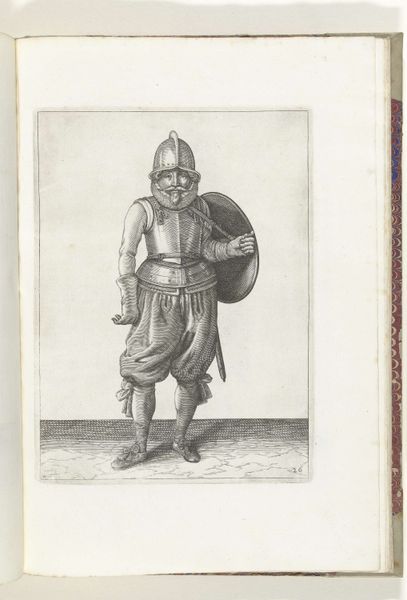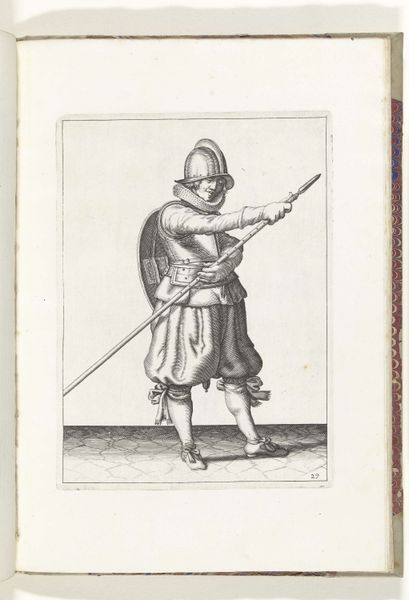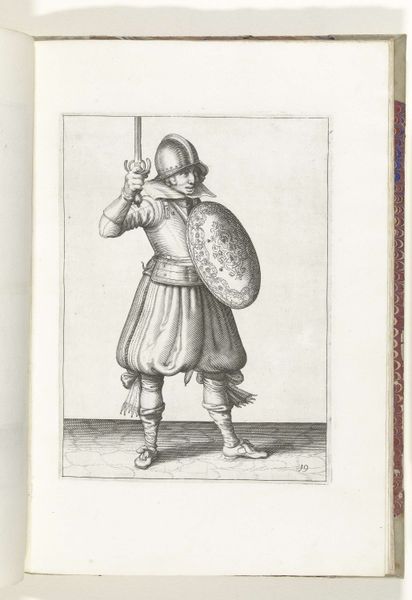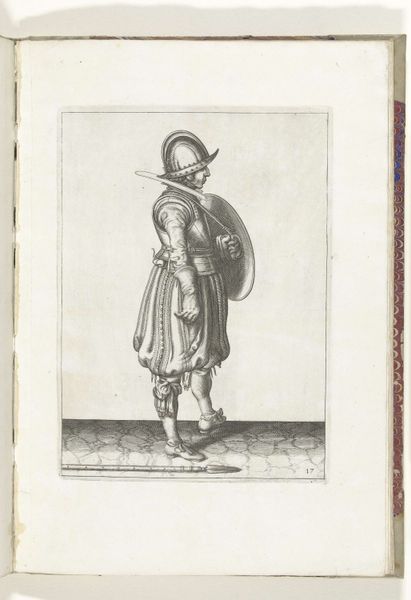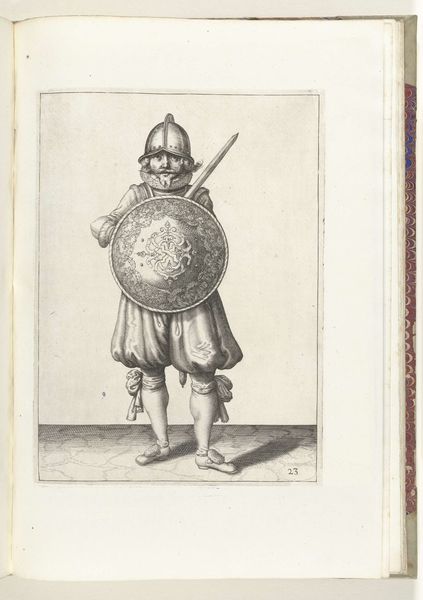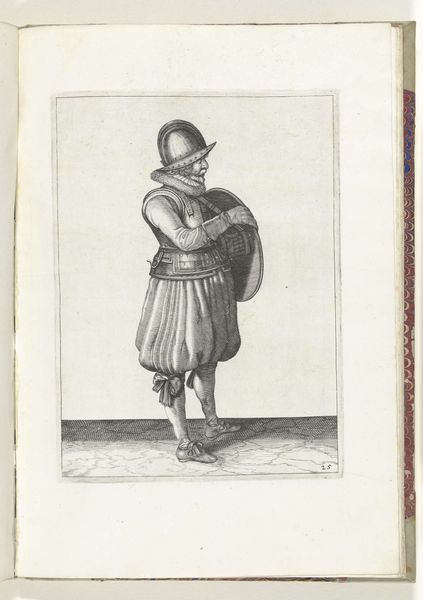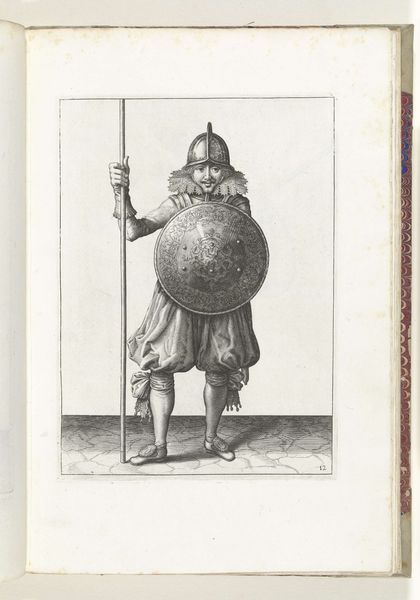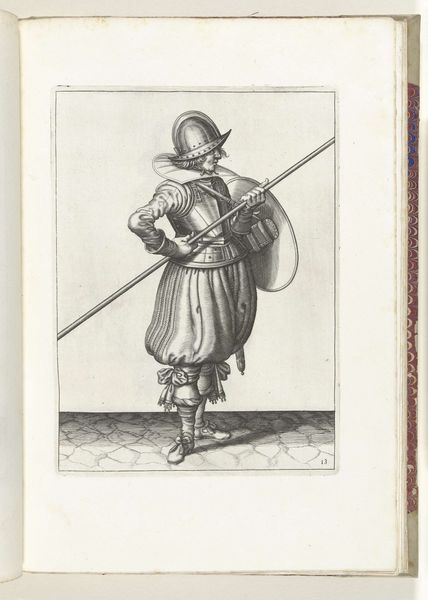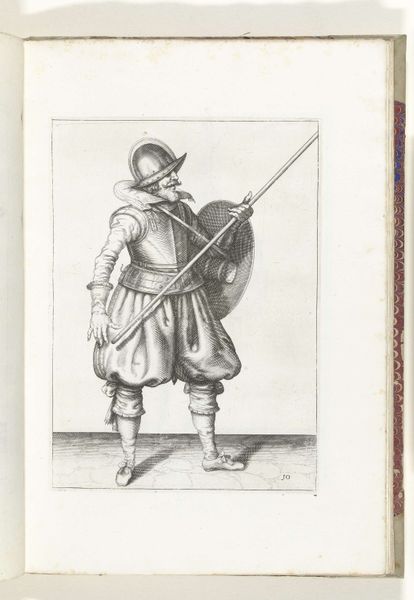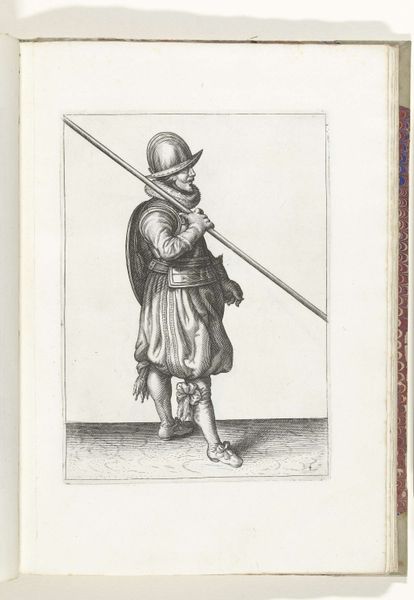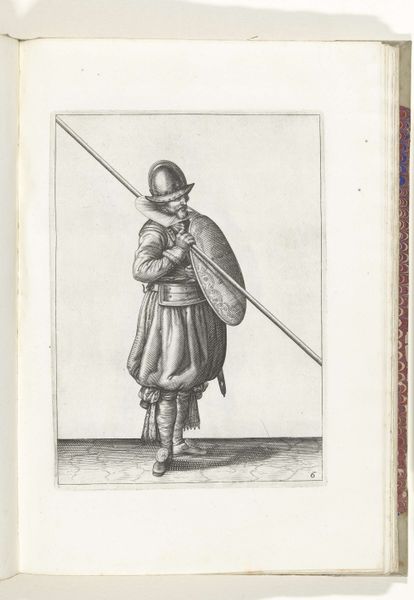
De exercitie met schild en spies: de soldaat in rust met de spies in de hand en het schild op de rug (nr. 1), 1618 1616 - 1618
0:00
0:00
drawing, print, ink, engraving
#
portrait
#
drawing
#
baroque
# print
#
ink
#
pen-ink sketch
#
history-painting
#
engraving
Dimensions: height 260 mm, width 190 mm
Copyright: Rijks Museum: Open Domain
Editor: Here we have Adam van Breen’s “De exercitie met schild en spies: de soldaat in rust met de spies in de hand en het schild op de rug (nr. 1)", created sometime between 1616 and 1618. It’s an engraving, a pen-and-ink sketch of a soldier at rest. The detail is incredible for a print. What stands out to you about this piece? Curator: I immediately notice the material implications of this print, right down to the production itself. The choice of engraving itself speaks volumes. This wasn’t about a singular precious object like a painting. Prints allowed for widespread distribution. Think about it: this image of a soldier could have circulated amongst military circles, nobles or even be disseminated among the common folk during the time. Editor: So the medium is the message, in a way? That the materials used influenced who got to see it and what it meant? Curator: Precisely! Engraving made the subject matter—military readiness, the presence of a standing army—available for wider consideration, wider consumption, if you will. Consider, also, the sheer labor that goes into producing multiple copies of an intricate image. This wasn’t a solitary artistic pursuit; it involved workshops, materials, distribution networks. Editor: It's like a factory assembly line, but for art? How subversive! Curator: In a sense. By considering the work this way, it opens our understanding. This print transcends simple portraiture, it documents early modern modes of production. Editor: That's fascinating! So much meaning comes from how it was made, not just what it depicts. It’s reshaped how I see prints of this era. Curator: Indeed, by looking at art through the lens of its material existence, production and distribution, we unearth socio-economic narratives.
Comments
No comments
Be the first to comment and join the conversation on the ultimate creative platform.
